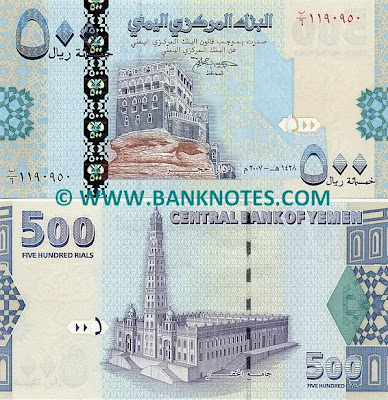(Reproduction of the following charts is permitted as long as they sourced to Yemeniaty)
On March 30th, Yemen's National Dialogue website released the names of the members participating in the nine working groups. The nine working committees will discuss the following topics:
1) Southern Issue
2) Sa'dah Issue
3) Good Governance
4) State building
5) National Reconciliation
6) Development
7) Rights and Freedoms
8) Army and Security
9) Independent/Social Issues
Although it seems like the final list will need revisions since several lists appeared online and were circulated amongst Yemenis with different numbers of participants. So far 11 members withdrew from the dialogue:
- One independent: Ahmed Saif Hashed
- Three from Islah: (1) Mohsin Ba'Sorah, (2) Tawakkol Karman and (3)Sheikh Hameed Al Ahmar
- Seven from Hirak: (1) Ismahan Al-'Alas, (2) Saleh Taher Al-Isa'ey, (3) Abdulaziz Abdul Hameed Al Maflihi, (4) Sheikh Tarek Al Mohami, (5) Mahmoud Shaief Hussein, (6) Mustafa Zain Al-'Aidaroos and (7) Khaled Ba-Ras.
The total number of participant should be 554; however, after several revisions to different lists the following charts are based on a 555 member conference.
Here are the groups:
In this committee, Hirak members have the biggest share. Followed by GPC, then YSP and Islah.
This category is dominated by GPC, then Hirak then members from the President's list. This category is where child marriages and other women issues will be discussed and it has 36 women and 45 men.
This is another group where Hirak, GPC and the members from the President's list have the most representation.
Civil Society is represented better in this category than most of the other working Committees.
Like the Southern Issue Committee, this group is represented by people who are affected most by it: Ansar Allah (formerly referred to as Al-Houthis). However in comparison, they are less represented since the committee is composed of 48 members (Southern Issue 40) and only 10 are from Ansar Allah. Also, Hirak has equal members to the GPC (6 seats), while Ansar Allah had only 2 seats in the Southern Issues Committee.
This group will be looking at constitutional reform. Half of the members in this group are from Civil Society, GPC, GPC's Allies, Islah and the President's list. Possibly the least group with Hirak representation.
The Army and Security is a surprisingly fair to the South in that Hirak has as many seats as GPC. Unfortunately this balanced is tipped off when GPC gave its allies 5 seats. The real losers in this category are women (4/45)
The main topic in the Good Governance Committee is Civil service reform. It seems to be a fair representation of the members chosen for the dialoge.
Like expected, women are represented fairly in the development, independent/social issues, human rights and freedom, and national reconciliation group. Women are less likely to be present in serious issues like security and military, Southern and Sa'dah Issue.
The final list of members in the Southern Issue is challenged by the Southern Hirak and the final list will be issued tomorrow. All these representations are susceptible to change.
On March 30th, Yemen's National Dialogue website released the names of the members participating in the nine working groups. The nine working committees will discuss the following topics:
1) Southern Issue
2) Sa'dah Issue
3) Good Governance
4) State building
5) National Reconciliation
6) Development
7) Rights and Freedoms
8) Army and Security
9) Independent/Social Issues
Although it seems like the final list will need revisions since several lists appeared online and were circulated amongst Yemenis with different numbers of participants. So far 11 members withdrew from the dialogue:
- One independent: Ahmed Saif Hashed
- Three from Islah: (1) Mohsin Ba'Sorah, (2) Tawakkol Karman and (3)Sheikh Hameed Al Ahmar
- Seven from Hirak: (1) Ismahan Al-'Alas, (2) Saleh Taher Al-Isa'ey, (3) Abdulaziz Abdul Hameed Al Maflihi, (4) Sheikh Tarek Al Mohami, (5) Mahmoud Shaief Hussein, (6) Mustafa Zain Al-'Aidaroos and (7) Khaled Ba-Ras.
Here are the groups:
In this committee, Hirak members have the biggest share. Followed by GPC, then YSP and Islah.
This category is dominated by GPC, then Hirak then members from the President's list. This category is where child marriages and other women issues will be discussed and it has 36 women and 45 men.
This is another group where Hirak, GPC and the members from the President's list have the most representation.
Civil Society is represented better in this category than most of the other working Committees.
Like the Southern Issue Committee, this group is represented by people who are affected most by it: Ansar Allah (formerly referred to as Al-Houthis). However in comparison, they are less represented since the committee is composed of 48 members (Southern Issue 40) and only 10 are from Ansar Allah. Also, Hirak has equal members to the GPC (6 seats), while Ansar Allah had only 2 seats in the Southern Issues Committee.
This group will be looking at constitutional reform. Half of the members in this group are from Civil Society, GPC, GPC's Allies, Islah and the President's list. Possibly the least group with Hirak representation.
The Army and Security is a surprisingly fair to the South in that Hirak has as many seats as GPC. Unfortunately this balanced is tipped off when GPC gave its allies 5 seats. The real losers in this category are women (4/45)
The main topic in the Good Governance Committee is Civil service reform. It seems to be a fair representation of the members chosen for the dialoge.
The final list of members in the Southern Issue is challenged by the Southern Hirak and the final list will be issued tomorrow. All these representations are susceptible to change.












.JPG)






















